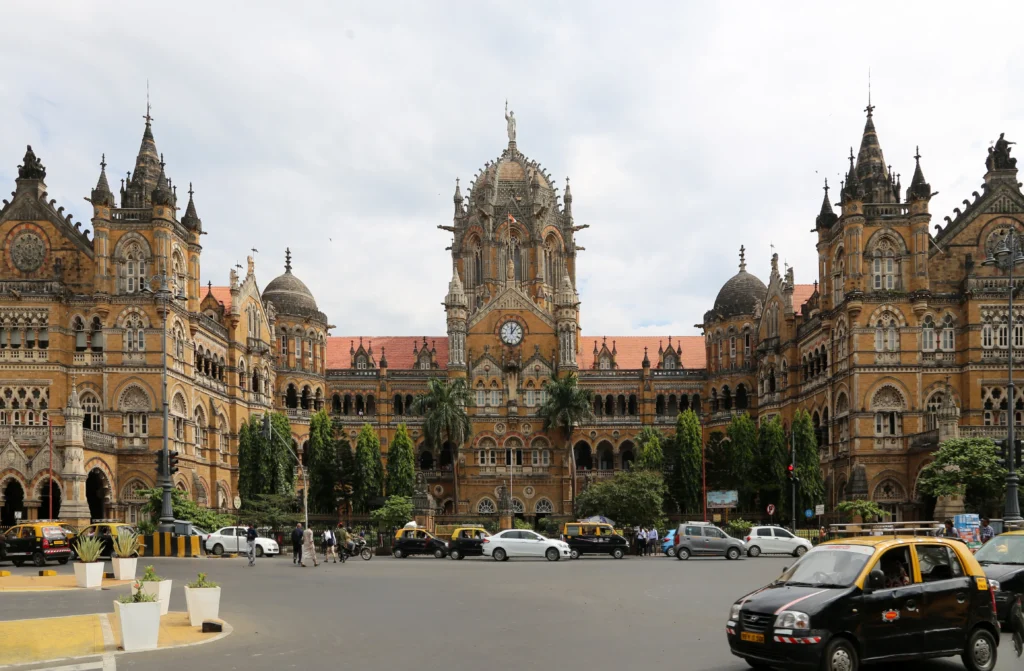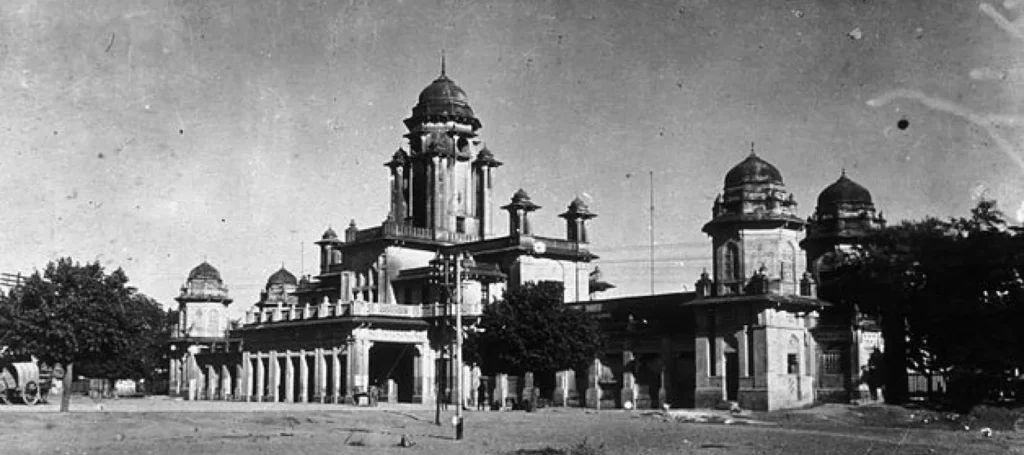The inception of Indian Railways traces back to the colonial era when the inaugural railway track from Bombay to Thane was laid in 1853. This marked the beginning of a remarkable architectural journey, punctuating the Indian landscape with a fusion of design influences. Here, we unveil the tales of ten ancient railway stations that stand as timeless witnesses to India’s railway heritage.

Chhatrapati Shivaji Maharaj Terminus:
Formerly known as Victoria Terminus, this architectural marvel was constructed in 1878 by the Great Indian Peninsular Railway. Recognized as a UNESCO World Heritage Site, it showcases the quintessence of Indo-Saracenic architecture, bearing testimony to a bygone era of cultural amalgamation and railway innovation.

Howrah Railway Station:
Dating back to 1852, the Howrah Railway Station stands as one of India’s oldest and busiest transportation hubs. With its iconic red facade and Romanesque architectural elements, it serves as a vital nexus of connectivity and mobility, facilitating the movement of millions across the nation.
Royapuram Railway Station:
Inaugurated in 1856, the Royapuram Railway Station in Chennai boasts impressive Corinthian columns, reminiscent of Victorian grandeur. Its inaugural journey marked a significant milestone in the annals of Indian railway history, reflecting the early strides in railway development.

Old Delhi Railway Station:
Undergoing a transformative journey since 1864, the Old Delhi Railway Station is a harmonious blend of Greco-Roman and Indo-Islamic architectural influences. With its bustling ambiance and modern transit infrastructure, it remains a vibrant testament to India’s rich cultural heritage.
Jaipur Railway Station:
Built in 1875, the Jaipur Junction exudes the vibrant spirit of the Pink City with its distinctive pink architecture. Serving as a bustling hub in Rajasthan, it embodies the essence of Jaipur’s cultural legacy while providing seamless connectivity for travelers.
Puducherry Railway Station:
Established in 1879, the Puducherry Railway Station showcases Greco-Roman columns that evoke nostalgia for the colonial era. Beyond its historical charm, it plays a pivotal role in regional connectivity, linking diverse urban centers across southern and eastern India.

Ghum Railway Station:
Nestled amidst the picturesque landscapes of Darjeeling Himalayan Railway, Ghum station stands as the highest railway station in India. Established in 1881, it offers not only breathtaking mountain views but also a captivating journey through railway history.
Virangana Lakshmibai Station:
Formerly known as Jhansi railway station, this architectural marvel pays tribute to the legendary queen Rani Lakshmibai. Built in the 1880s with a fort-like structure inspired by Jhansi Fort, it serves as a vital link between India’s northern and southern regions, commemorating the region’s rich historical legacy.
Barog Railway Station:
Situated on the Kalka-Shimla Railway line, Barog station is a testament to British-era engineering and innovation. Built between 1898 and 1903, its proximity to Tunnel Number 33 and picturesque hillside setting make it a popular stop for travelers exploring Himachal Pradesh’s scenic beauty.
Charbagh Railway Station:
Lucknow’s Charbagh station, designed by English architect H. Horniman, is a masterpiece of Mughal, Rajput, and Awadhi architectural styles. Completed in 1926, its domes, minarets, and verandas resemble a regal palace, reflecting the city’s rich cultural heritage and historical legacy.
These ancient railway stations narrate tales of bygone eras, where architectural marvels intertwined with the advent of railway technology. As guardians of India’s railway heritage, they continue to evoke awe and admiration, inviting travelers on a nostalgic journey through time.
